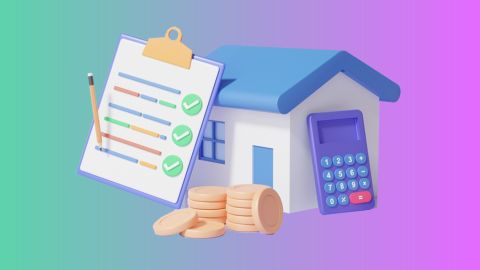In the evolving financial landscape, understanding various mortgage options is crucial for making informed decisions. One such option that has been gaining traction is the future advance mortgage. This financial instrument allows borrowers to access additional funds over time using the same collateral, offering flexibility and convenience. If you are considering leveraging your property to secure a loan, it is essential to understand how a future advance mortgage works, its benefits and drawbacks, and how it compares to traditional mortgages. In this article, we will delve into the nuances of future advance mortgages and highlight how Bajaj Finserv Loan Against Property can be an ideal solution for your financial needs.
What is a future advance mortgage?
A future advance mortgage is a type of mortgage agreement where the borrower is permitted to borrow additional sums of money over time without renegotiating the terms of the original mortgage. Essentially, it is an open line of credit secured against a property. This means that as long as the borrower remains within the limits set by the lender, they can draw down more funds as needed, which is particularly useful for ongoing projects or unexpected expenses.
How does a future advance mortgage work?
A future advance mortgage works similarly to a traditional mortgage with an added layer of flexibility. Here is how it operates:
- Initial loan agreement: The borrower and lender agree on the terms of the loan, including the maximum amount that can be borrowed, interest rates, and repayment terms.
- Secured against property: The mortgage is secured against the borrower’s property, providing the lender with collateral.
- Additional fund access: The borrower can access additional funds over time without needing a new loan agreement. These additional funds are known as "future advances."
- Repayment: As with traditional mortgages, the borrower repays the loan in instalments, which include both the initial and future advances.
For a more comprehensive understanding, visit our website to learn how to proceed with the application process.
Benefits and drawbacks of a future advance mortgage
Benefits:
- Flexibility: Borrow funds as needed without renegotiating the loan.
- Cost-efficient: Save on fees and legal costs associated with multiple loan agreements.
- Convenient: Ideal for ongoing financial needs, such as home renovations or business expansion.
Drawbacks:
- Interest accumulation: Additional advances can increase the overall interest payable.
- Risk of over-borrowing: Easy access to funds might lead to excessive borrowing.
- Property risk: The property remains at risk if repayments are not met.
Future advance mortgage vs. traditional mortgage
| Feature | Future advance mortgage | Traditional mortgage |
| Flexibility | High | Low |
| Cost efficiency | Higher due to fewer legal fees | Lower |
| Repayment terms | Variable as per future advances | Fixed |
| Accessibility of funds | Ongoing | One-time |
| Risk of over-borrowing | Higher | Lower |
Eligibility criteria for future advance mortgage
To qualify for a future advance mortgage, you generally need to meet the following criteria:
- Property ownership: You must own a residential or commercial property.
- Credit score: A good credit score to assure lenders of your repayment capability.
- Income proof: Proof of a stable income to manage repayments.
- Age: Typically, between 25 years and 85 years.
- Employment: Stable employment history or a profitable business if self-employed.
For detailed eligibility requirements, refer to the eligibility and documents section.
Application process for a future advance mortgage
Applying for a future advance mortgage involves several steps:
- Application submission: Fill out the loan application form, providing necessary details and documents.
- Property evaluation: The lender evaluates the property to determine its value and the maximum loan amount.
- Credit assessment: The lender assesses your creditworthiness based on your credit score and financial history.
- Approval and agreement: Once approved, a loan agreement is signed, detailing the terms of the loan and future advances.
- Fund disbursement: Initial funds are disbursed, and future advances can be accessed as per the agreement.
Future advance mortgage interest rates and terms
Interest rates for future advance mortgages can vary based on several factors including the borrower’s credit score, property value, and lender policies. Typically, these rates are slightly higher than traditional mortgage rates due to the added flexibility.
Terms to consider:
- Variable vs. fixed rates: Future advance mortgages may have variable interest rates.
- Repayment period: Similar to traditional mortgages, typically spanning up to 15 years.
- Fees and charges: Additional fees may apply for future advances. Refer to the fees and charges for more details.
In conclusion, a future advance mortgage offers a flexible and cost-effective way to manage ongoing financial needs using your property as collateral. Bajaj Finserv Loan Against Property provides an excellent option for those seeking such flexibility. You can calculate your EMI using our EMI calculator to get an overall overview of the loan.




